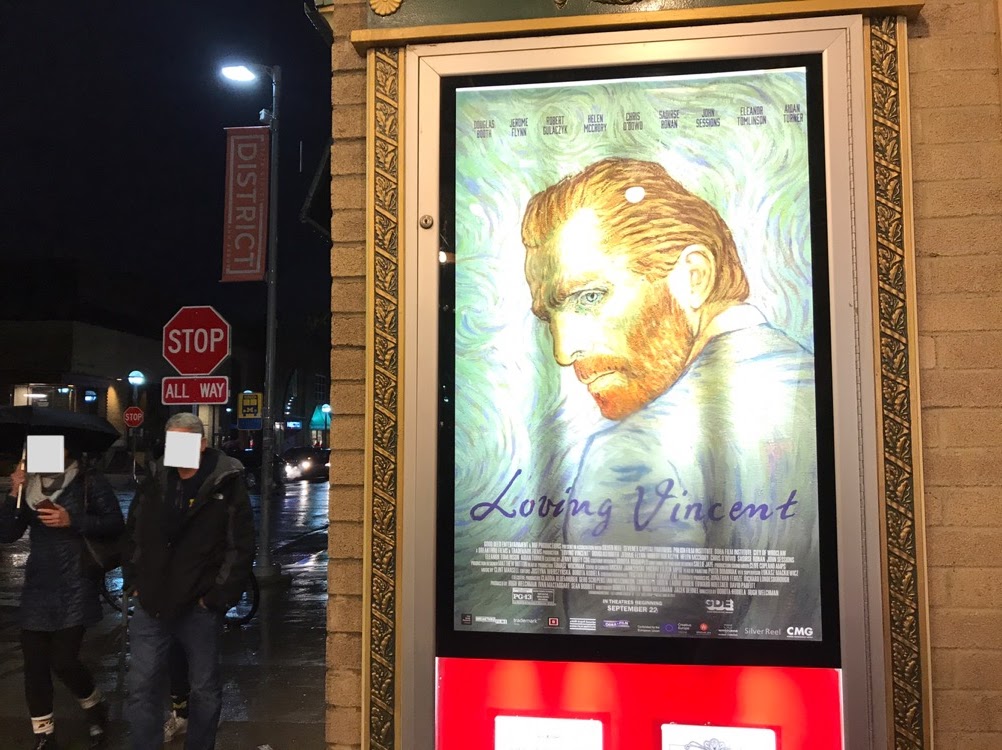It was a dark and stormy night as I walked my way to the Michigan Theater for the Saturday premiere of Loving Vincent. However, the dreary weather did not dissuade many from showing up to experience the film, which proved to be very rewarding.
I knew, going into the theater, that the film’s existence itself is almost miraculous– over 100 expert painters worked to create more than 6,000 frames of paintings done in the style of Van Gogh, making it the first and only painted animated film in the world. However, I was unprepared for how overwhelmingly the art, plot, and characters melted together masterfully to produce such a moving take on Van Gogh’s biography.
The striking thing about this biographical take is that it begins a year after Van Gogh takes his own life. While a surprising, but not unprecedented, artistic choice, focusing on the subject’s death and tracing the steps that led up to it often sets a bleak mood from the beginning, though Loving Vincent separates that overall mood and gives it particular names: guilt, regret, sorrow, grief, all of which reverberate from Van Gogh’s suicide. The film opens up with a shot of the familiar Van Gogh piece “Starry Night”; zooming into the village below, while still retaining the characteristic, colorful swirls of Van Gogh’s artistic style, the viewer is immediately transported into the plot, which moves almost as fluidly as the brushstrokes that compose each masterfully produced frame.
Armand, the son of Vincent Van Gogh’s postman, who is tasked by his father to deliver Van Gogh’s last letter addressed to his brother, Theo. Unwillingly, Armand is whisked into a scavenger hunt for clues that will piece together the real reason Van Gogh ended his own life. His mission takes him to every corner of the town Van Gogh died in, meeting characters who knew the artist before his death; his doctor, the daughter of his landlord, a young woman with whom he shared an intimate relationship with, the boatsman who often sat with the artist as he painted on the riverside, and other locals. Without revealing too much revealing content about the outcome of the film, I will emphasize that I appreciated the way that Van Gogh’s character was still left with a certain degree of ambiguity in the end, a type of mystique that the film did not attempt to force into definite causes and effects.
I was most impressed by the scenes that contained shots of smoke, water, and fire; it was mystifying to watch and know that these seemingly fluid, effortless movements were painstakingly labored over to produce the desired degree of motion. I cannot stress enough how beautiful this film is; it is by far one of the most gorgeous ones I have ever seen.
However, although the artistic achievement of this movie is beyond praise, I found myself becoming a little bit confused as the plot thickened. The network of characters and their associations quickly becomes vast and intricate, although each piece of the puzzle fits in nicely, in the end.
I highly recommend this film for both Van Gogh fans and casual observers alike. The Michigan Theater will be showing it until November 9th. Tickets can be purchased here: https://prod3.agileticketing.net/websales/pages/info.aspx?evtinfo=335674~c76be4f4-22b5-4bed-a89c-7def863b8c53&



